Jean-Hippolyte Flandrin

Young Man by the Sea
Balaam's Prophecy of Christ as Star and Sceptre
Rene-Charles Dassy and His Brother Jean-Baptiste-Claude-Amede Dassy
The Death of Jesus Christ on Calvary
A study of the head of Saint John the Evangelist in Profile
Hezekiah, King of Judah
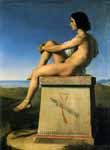
Polites, son of Priam, watching the movements of the Greeks to Troy

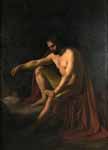
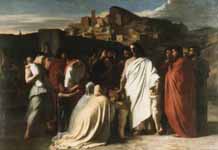
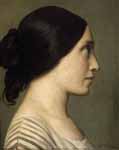
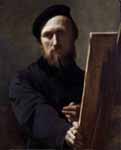

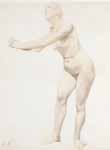
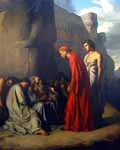
Dante led by Virgil, offers consolation to the souls of Envious
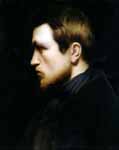
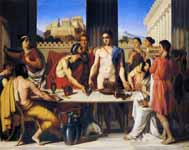
Theseus Recognized by his Father

Young woman bust, called the Florentine
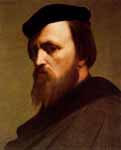
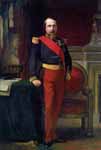
Napoléon III, Emperor of France
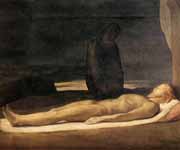
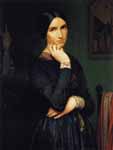
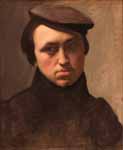
Jean-Hippolyte Flandrin (23 March 1809 – 21 March 1864) was a 19th-century French painter. His celebrated 1836 work Jeune Homme Nu Assis au Bord de la Mer ("Young Male Nude Seated beside the Sea") is in the Louvre.
Biography
Early life
From an early age, Flandrin showed interest in the arts and a career as a painter. However, his parents pressured him to become a businessman, and having very little training, he was forced to instead become a miniature painter.
Jeune Homme Nu Assis au Bord de la Mer (1836)
Hippolyte was the second of three sons, all of whom were painters in some aspect. Augusto, his older brother, spent most of his life as a professor at Lyon and later died there. Paul, his younger brother, was a painter of portraits and religious imagery.
Hippolyte and Paul spent some time at Lyon, saving to leave for Paris in 1829 and study under Louis Hersent. Eventually, they settled in the studio of Jean Auguste Dominique Ingres, who became not only their instructor but their friend for life. At first, Hippolyte struggled as a poor artist. However, in 1832, he won the Prix de Rome for his painting Recognition of Theseus by his Father. This prestigious art scholarship meant that he was no longer limited by his poverty.
Career
Polytès, Son of Priam, Observing the Movements of the Greeks (1833-34)
The Prix de Rome allowed him to study for five years in Rome. While there, he created several paintings, increasing his celebrity both in France and Italy. His painting St. Clair Healing the Blind was created for the cathedral of Nantes, and at the exhibition of 1855 years later, it also brought him a medal of the first class. Jesus and the Little Children was given by the government to the town of Lisieux. Dante and Virgil visiting the Envious Men struck with Blindness and Euripides writing his Tragedies are now in the Museum of Fine Arts in Lyon.
Upon his return to Paris in 1856, Flandrin received a commission from the chapel of St John in the church of St Séverin. As a result, his reputation became even more impressive, virtually guaranteeing him continuous employment for the rest of his life.
In addition to these works, Flandrin also painted a great number of portraits. However, he is much more known today for his monumental decorative paintings. The most notable of these are found in the following locations:
in the sanctuary, choir, and nave of St Germain des Prés at Paris (1842–1861)
in the church of St Paul at Nîmes (1848–1849)
of St Vincent de Paul at Paris (1850–1854)
in the church of St-Martin-d'Ainay at Lyon (1855)
Death
In 1853, Flandrin was elected to the Académie des Beaux-Arts. In 1863, his failing health, made worse by his hard work and extended exposure to the damp and draughts of churches, induced him to visit Italy again, where he died of smallpox in Rome on 21 March 1864.
See also
List of works by Eugène Guillaume
----
Fine Art Prints | Greeting Cards | Phone Cases | Lifestyle | Face Masks | Men's , Women' Apparel | Home Decor | jigsaw puzzles | Notebooks | Tapestries | ...
----
Artist
A - B - C - D - E - F - G - H - I - J - K - L - M -
N - O - P - Q - R - S - T - U - V - W - X - Y - Z
Retrieved from "http://en.wikipedia.org/"
All text is available under the terms of the GNU Free Documentation License







